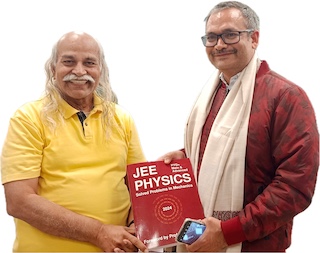Verification of the Laws of Reflection
The laws of reflection are,
- The incident ray, reflected ray, and normal to the surface lies in the same plane.
- The angle of incidence \(i\) is equal to the angle of reflection \(r\).
Students find it difficult to comprehend these laws because they involve three dimensional geometry. The experiments given here will help in complete understanding of these laws.
Procedure
You need a plane mirror, scale, protractor, thermocol sheet, white paper, and pins for this experiment.
- Fix the white paper on the thermocol sheet with the help of pins.
- Place the mirror near to one edge of the paper and mark its position.
- Place two pins vertically on one side of the normal so that line joining two pins make an angle of approximately 30 degree with the normal.
- See image of two pins from other side of the normal and place a pin vertically so that it is in line with images of other two pins. Similarly, place one more pin at some distance from this pin.
- Extend the lines. Measure angle of incidence and angle of reflection.
- Repeat for two more incident angles (say 45 degree and 60 degree).
- Now, see the head of the pins in step (3). Raise one of the pin and press another pin. Now repeat step (4) such that images of the pin-head are aligned. Visualise the plane containing incident ray, reflected ray and normal. You may place a paper on this plane. Raise another pin and visualize again.
Variant
Place the plane mirror vertically on the table. Place a laser torch at some height \(h_1\) in front of the mirror so that light falls on the mirror traversing a path in horizontal plane. Locate the spot made by the reflected beam and measure its height \(h_2\).
Check that \(h_1=h_2\). Since the source is at height \(h_1\) and incident ray is in horizontal plane, the point of reflection should be at that same height. As the mirror is vertical, the normal lies in the horizontal plane at height \(h_1\). This shows that incident ray, reflected ray and normal lies in same plane (horizontal plane in this case).
One more variant: Take a transparent plastic box of approximate size approx 12 in by 18 in by 6 in. Paste a plane mirror on one of the vertical face (from inside the box) with the help of adhesive (quickfix etc). Make a small hole to push a incense stick (dhoop, agarbatti). A big protector placed on the top can be used to measure angle. You can mark horizontal lines on the mirror so that height of the spot where incident ray strikes is known. This setup can be used to show both laws of reflection.
